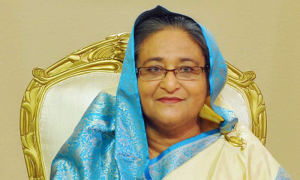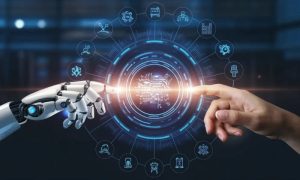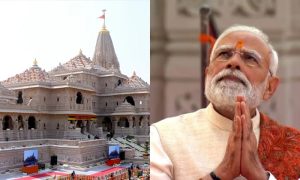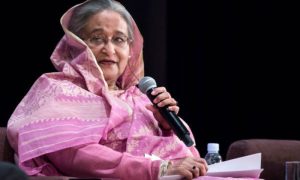In what could prove the most radical structural reform in Test cricket’s 133-year history, the ICC has formally initiated discussions on introducing a two-tier format for the longest format of the game. The proposal gained traction during the ICC’s recent annual general meeting in Singapore—the first under its new, all-Indian leadership, with Jay Shah chairing the board and Sanjog Gupta serving as chief executive.
A dedicated eight-member working group has been formed to explore the viability of the divisional model and is expected to present its recommendations before year’s end.
What is the two-tier test cricket system?
If implemented, the new structure would come into effect from the 2027–2029 World Test Championship cycle and would replace the existing nine-team round-robin with a two-tier format: two groups of six, determined by the ICC Test rankings.
At present, that would place Australia, India, England, South Africa, New Zealand, and Sri Lanka in Division One, while relegating Pakistan (ranked 7th), along with West Indies, Bangladesh, Ireland, Afghanistan, and Zimbabwe, to Division Two.
The implications are as stark as they are political. Not only would second-tier teams have reduced access to high-profile opposition, but the move could also jeopardize broadcasting deals, sponsorships, and player development pipelines in countries already struggling to maintain their Test programs.
BCCI’s shift in stance: From opposition to ownership
Ironically, this is not the first time a two-tier model has been tabled. In 2016, it was India—then led by Anurag Thakur—that resisted the idea, citing the risk of marginalizing smaller cricketing nations. “The BCCI does not support the two-tier Test system because it risks sidelining smaller cricketing countries,” Thakur told The New Indian Express at the time.
Boards from Bangladesh, Sri Lanka, and Zimbabwe also voiced strong resistance, and the plan was shelved. But in 2025, the post-COVID financial landscape has recalibrated global cricket’s power matrix. India’s commercial dominance has expanded to the point where it can now shape structural reforms without jeopardizing its own scheduling or revenue streams.
With the backing of fellow heavyweight boards—Australia, England, South Africa, New Zealand, and Sri Lanka—the BCCI now finds itself at the center of a reform it once rejected.
Strategic isolation of Pakistan
Pakistan’s relegation into the second division, while framed as a reflection of rankings, is rooted in deeper strategic exclusion. India’s long-standing refusal to play bilateral cricket with Pakistan already limits the latter’s opportunities in the Test arena. With fewer high-profile fixtures and restricted hosting windows, Pakistan’s ability to accumulate WTC points has been hampered—not by cricketing merit alone, but by isolationist scheduling politics.
The two-tier model further legitimizes Pakistan’s absence from marquee Test series. It also casts Pakistan as a peripheral actor in Test cricket’s premier narratives, gradually diminishing its stature on the global stage.
As DW journalist Kalika Mehta observed, “India’s rise as the superpower of world cricket is rooted in its financial weight, but it’s now sustained by political influence and media control. It has created a monopolistic structure that threatens the game’s diversity and equity to the detriment of Pakistan and other, smaller cricketing nations.”
PCB pushes back against inequity
The Pakistan Cricket Board has openly criticized the proposal, calling it a threat to Test cricket’s universality and development. “Test cricket doesn’t belong to a handful of elite nations,” a senior PCB official told reporters. “If emerging teams are consistently denied opportunities to face top-tier opposition, how are they ever expected to improve?” The PCB maintains that its resistance stems not from fear of relegation, but from a broader commitment to fairness and opportunity for nations like Bangladesh, West Indies, and Ireland.
Competitive reality vs constructed tiers
There’s also a sporting argument against the divisional model. Over the past few years, so-called “second-tier” teams have repeatedly proven their mettle. Pakistan defeated England in a home series last winter with tactical dominance in spin conditions. The West Indies haven’t lost a home series to England since 2004 and recently drew a series in Australia. Bangladesh held England to a series draw, and Sri Lanka’s Test win at The Oval was no upset—they finished near England in the WTC standings.
Meanwhile, elite matchups often lack balance. England have lost 13 of their last 15 Tests in Australia, and haven’t won a single match there since 2011. Yet, their place in a hypothetical Division One is unquestioned. If the goal of this system is to keep the “Big Three” playing each other for revenue, it risks reducing Test cricket to a closed loop of predictable, commercially driven encounters.
A two-tier system may offer structure, but at the cost of the format’s spirit. It risks replacing sporting merit with market logic, and in doing so, widens the gap between those who already dominate and those still fighting for relevance. What makes elite matchups special is their rarity, not their repetition.



























